genes
Latest
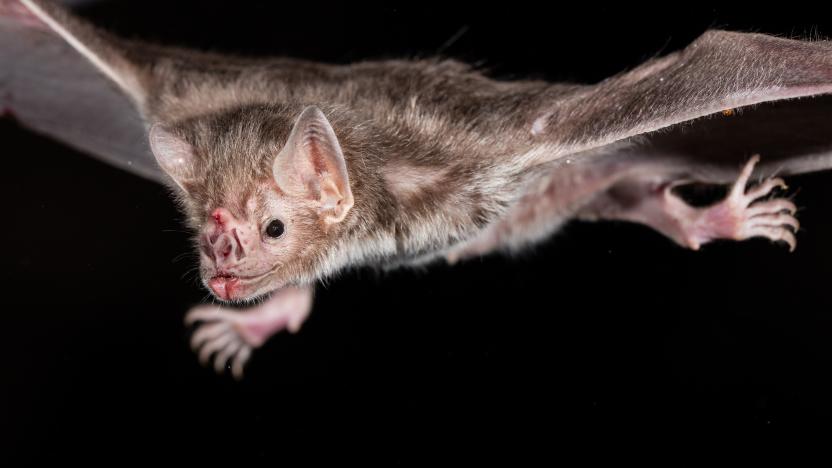
Gene losses allow vampire bats to live solely on a diet of blood
Scientists detail the loss of 13 genes in the blood-sucking mammals.
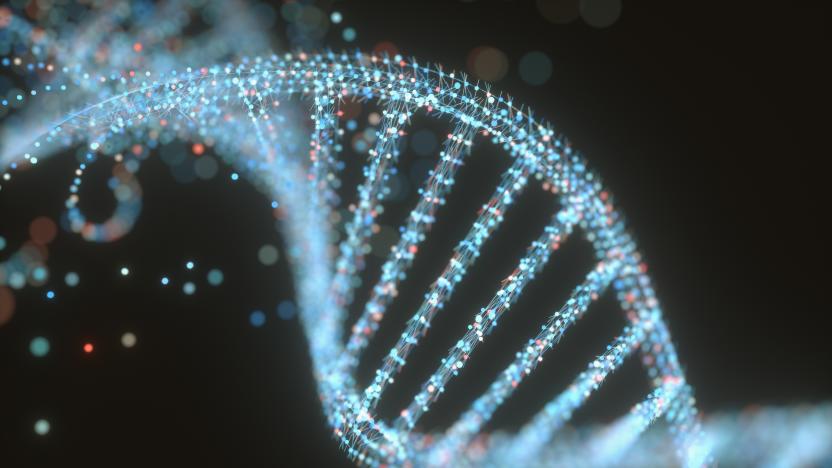
Scientists rename genes because Microsoft Excel reads them as dates
Scientists have been renaming human genes to prevent Microsoft Excel from misreading them as dates and corrupting data.
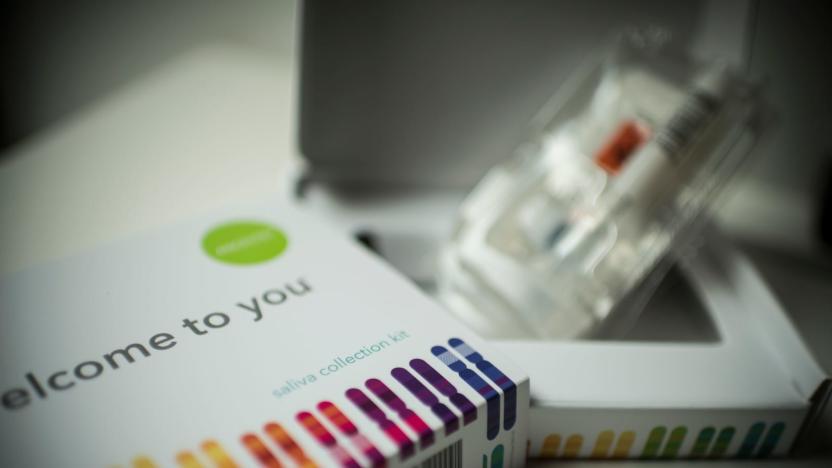
23andMe's VIP service includes a one-on-one chat to explain your DNA
How does a DNA testing service like 23andMe convince you to shell out more when the base results are the same? By rolling out the red carpet, it seems. The company has introduced a $499 VIP Health + Ancestry Service that includes two Health + Ancestry kits, faster lab processing, overnight shipping, a year of "premium" support and, crucially, a 30-minute one-on-one walkthrough of your Ancestry results. Effectively, 23andMe wants to offer a concierge for your genes.

AI offers a new way to look inside living human cells
Over the course of their careers, biologists develop a huge mental library of cell structures and their corresponding data. Investigating specific areas of a living cell involves a piecemeal approach, identifying how some parts work with others and spending time on cell labelling. But now, the Allen Institute for Cell Science has launched the first predictive 3D model of a live human cell -- the Allen Integrated Cell -- and it could be "a total game changer", according to researchers.

Genealogy service's DNA test helps you find your roots
Genealogy services are all about tracing your family's history, so it makes sense for one of these services to identify your genetic history, doesn't it? MyHeritage sure thinks so. It's introducing a $79/£79 MyHeritage DNA kit that offers a detailed look at not only your ethnic roots, but your geographic connections as well. Are you from eastern Europe, or northern Africa? You might just find out when your swab test results are ready in 3 to 4 weeks. Your report will even show you potential DNA matches with others, in case someone else is a distant relative.

Humans can only live to 115, researchers claim
Research out of New York's Albert Einstein College of Medicine believes that the goal of living forever is an impossible one. A team of researchers analyzed mortality rates and aging trends across the world and found that there may be a ceiling to our lifespan. Popular belief may be that humans could live longer if they remain in good health, it appears that the best we can hope for is 115 years on this planet. Which should give you just enough time to finish all of those TV series binges before the world inevitably boils into dust.

Infant is world's first to have three biological parents
It sounds like the setup of a wacky science fiction comedy, but this is actually real life. A five-month old baby boy was just revealed to be the first kid in the world with three biological parents, according to New Scientist. The infant was created by a technique that has only been legally approved in the UK, and it lets parents with genetic disorders have healthy babies. The study is believed to fast track progress in the field, and is the latest in a series of advances in genetic science we've seen recently.
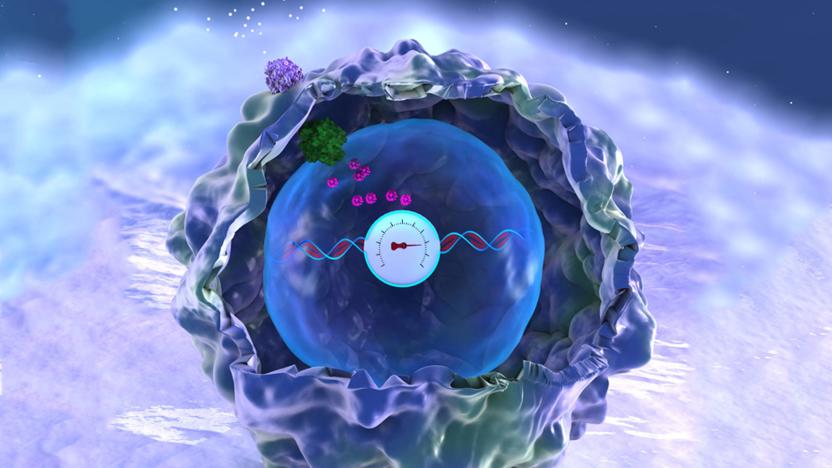
Gene editing records 'memories' in human DNA
Scientists have been recording data in DNA for a while, but it has usually involved bacteria and other simple organisms. MIT, however, just took a big leap forward. Its researchers have used the CRISPR gene editing technique to record histories in human cell DNA for the first time. They've crafted a gene circuit that only expresses an enzyme when it's near a key immune cell molecule, building up mutations the more it's exposed to that molecule. All you have to do to extract "memories" is to sequence those genes. They'll tell you whether or not there was a lot of inflammation, for instance.
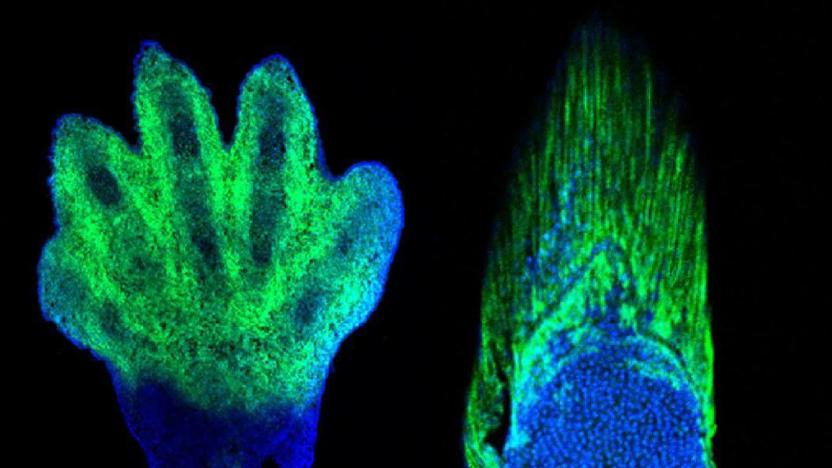
Gene editing helps spot evolutionary link between fins and hands
Gene editing technology isn't just useful for curing the world's ills, it seems. University of Chicago scientists have used the CRISPR technique to discover a key evolutionary connection between fins and hands. Researchers edited fin-related zebrafish genes to make the appropriate cells glow as they develop, and discovered that there's a similar glow in a mouse's digits. In other words, there's a strong similarity in the genes governing fins and digits -- they're both telling embryonic cells to show up at the end of an appendage.
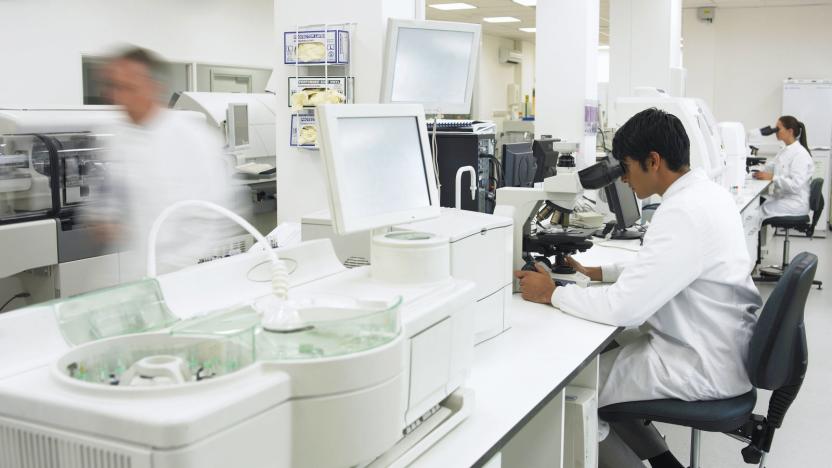
Chinese scientists will soon begin the first CRISPR human trial
American regulators already approved a University of Pennsylvania team's plans to conduct a CRISPR trial on humans, but a group of Chinese scientists will beat them to the punch. The Chinese team from the Sichuan University's West China Hospital in Chengdu will begin testing the efficacy of modified cells for lung cancer treatment in August. They chose patients who still haven't gotten well even after undergoing chemotherapy, radiation therapy and other treatments.

Mutants exist and are fighting lethal diseases
A study that analyzed the genetic data of almost 600,000 people has discovered that mutants are very real. But, rather than shooting lasers from their eyes or lifting cars, their power is to lead a healthy, normal life. The meta-study, conducted by a team led by Stephen Friend, found 13 individuals who should have either been dead or seriously ill. Despite this, they've been unaffected by disorders like Tay-Sachs and cystic fybrosis, thanks to some genetic mutation in their bodies that's been quietly fighting the condition.

UK scientists get permission to 'gene edit' human embryos
A team of British scientists has been approved to use "gene editing" techniques on human embryos, in the hope that it will better our understanding of early human life. A group at the Francis Crick Institute in London wants to research newly fertilised eggs and how they develop in the first seven days -- from a single cell to a blastocyst with roughly 250 cells. Using gene manipulation, the researchers want to glean new insights about our DNA and the exact requirements for a healthy embryo. With this information, specialists could find ways to improve post-IVF embryo development techniques and clinical treatments for infertility.

Scientific community approves human gene editing studies
Human gene editing research is extremely controversial due to numerous ethical, moral and legal reasons that some groups would prefer to see it banned outright. Those who do want it to move forward can breathe easily for now, though, as the leaders of a summit held by the US National Academies of Sciences and Medicine, the Chinese Academy of Sciences and the United Kingdom's Royal Society have decided to support human gene editing research. The scientists are even OK with modifying eggs, sperm and embryos (collectively called germline cells), so long as the edited cells stay in the lab and aren't used to induce pregnancies. In other words, creating designer babies is a no-no. We'll bet that means the NIH will uphold the ban on funding studies that deal with embryo engineering.

Scientists show that gene editing can 'turn off' human diseases
Gene editing has already been used to fight diseases, but there's now hope that it might eliminate the diseases altogether. Researchers have shown that it's possible to eliminate facial muscular dystrophy using a newer editing technique, CRISPR (Clusters of Regularly Interspaced Short Palindromic Repeats) to replace the offending gene and 'turn off' the condition. The approach sends a mix of protein and RNA to bind to a gene and give it an overhaul.
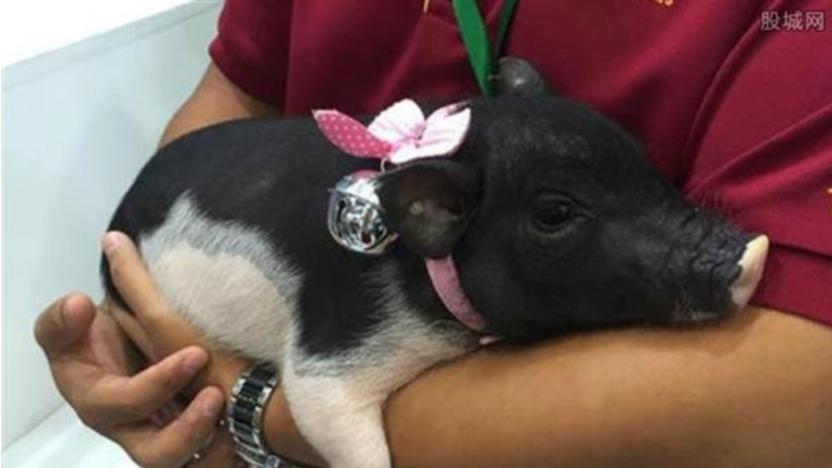
Chinese firm wants to sell you genetically modified pet pigs
The concept of buying pets with custom genes may soon become a reality. Beijing Genomics Institute has divulged plans to sell genetically modified pigs whose DNA will keep them small, weighing in at a modest 31 to 44 pounds. The tweak was originally meant to produce ideal subjects for disease modeling research, but the healthy first generation is reportedly well-suited to pet buyers who don't want large hogs in their living rooms. While it's too soon to know exactly how long these "micro pigs" will live, they're expected to last 15 to 20 years.

Big Data VR app allows researchers to 'browse' genomes
Earlier this year, Epic Games (the folks that made the Unreal Engine) held a $20,000 competition that challenged VR companies to create programs that could help users better tackle the valuable, albeit unwieldy, figures in Big Data sets. For its entry into "The Big Data VR Challenge" Hammerhead VR submitted The Genome Browser, a virtualization that will allow researchers to, quite literally, browse through an organism's genome and access a library of data (generated by the Wellcome Sanger Institute) at each gene.

Human gene sequencing gets an official yardstick
Gene sequencing, once a rare feat, is pretty common these days... but how do you know that your DNA data is up to snuff? As of now, there's an easy way to find out. The National Institute of Standards and Technology (NIST) has released reference genetic material that serves as a "measuring stick" for human gene sequencing. Researchers have tested this sample genome so thoroughly that it'll tell labs whether or not they're making typical mistakes, and ensure that their results are trustworthy. The hope is that you'll see bulletproof sequencing devices that take the anxiety out of pinpointing genetic conditions or understanding your ancestry. [Image credit: Gerald Barber, Virginia Tech University (with permission of the National Science Foundation)]

Police can spot differences between identical twins by melting DNA
Believe it or not, police have a real problem with identifying suspects who are identical twins -- unless you're willing to spend a month sequencing genes, DNA samples are all but useless. They may be far more effective in the future, though, as British researchers have developed a technique that melts DNA to identify what few differences exist. The team has determined that heating genes will break hydrogen bonds that form due to a person's environment and habits. Unless the twins live eerily similar lives, those bonds will snap at different temperature points and quickly identify who's who.

The UK inches closer toward making babies from three people's DNA
The UK's House of Commons overwhelmingly voted in favor of a law that would allow scientists to genetically engineer babies from the DNA of three people. Before your mind wanders to some of the more... salacious possibilities, the technique -- a spin on traditional in vitro fertilization -- is meant to help women with mitochondrial disease have families without fear of passing the illness down.

Genetic 'glue' helps make 3D-printed organs
No, you're not looking at a dessert gone horribly wrong -- that might just be the future of synthetic organ transplants. Scientists at the University of Texas at Austin have developed a genetic "glue" that forms gels useful for 3D printing organic tissues. The key is using custom-designed, complementary DNA strands that bond just the way you'd like them. This flexibility would let hospitals and labs create organs that grow in a specific way, and take on specific structures. In short, it'd be relatively easy to print the exact organ you need, and even customize it for the recipient if necessary.







